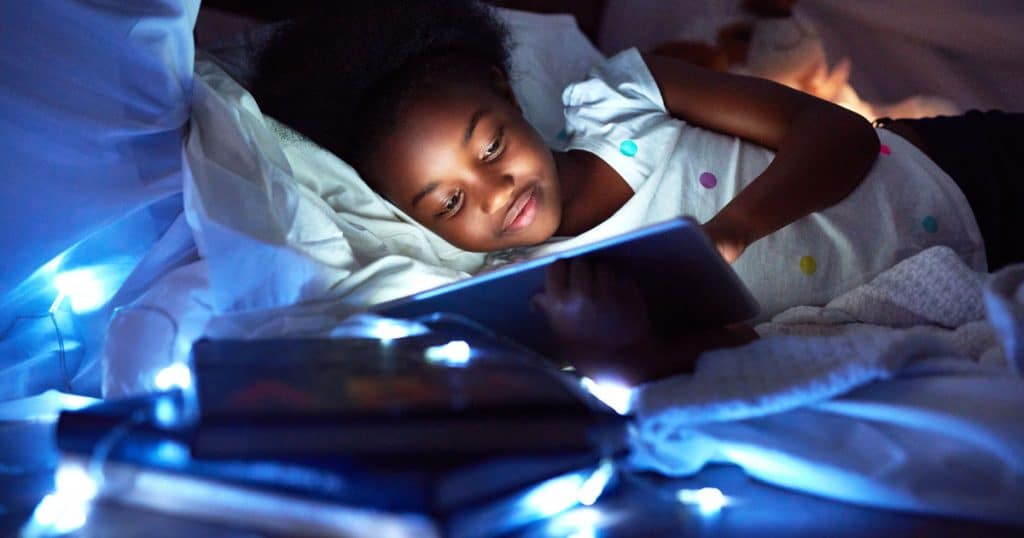As the world begins to emerge from a year and a half of online collaboration and virtual learning, many of us are thrilled about a return to in-person communication. But let’s be honest: we’re not all going to turn off our computers, throw away our phones, and never look back. It certainly isn’t going to be easy to shift back to “normal” life for the millions of us who have learned to work, socialize, and relax using the same 6-, 9-, or 13-inch screens.
Instead, it’s time we take a good, hard look at objective metrics like screen time and subjective ideas about well-being to adopt healthier tech habits. As it is in so many areas of life, the key concept here is “moderation.” Too much immersion in technology can be bad for sleep and pull us away from productivity; too little connection, however, can leave us feeling untethered or disconnected.
Of course, technology is also a lifeline for many people. They couldn’t do their jobs, attend school, or stay in touch with friends and family without using a device. That’s why it’s so important to set healthy boundaries for technology use—and maybe even transform it into a force for good.
Screen time in and of itself isn’t a bad thing—after all, millions of us spent 2020 working, learning, and staying connected via our screens. But an honest assessment can help us identify which segments of screen time feel normal and which feel excessive. Maybe you find yourself distracted from work and reading the news or scrolling through social media. If so, create a pragmatic schedule to minimize your immersion in negative or toxic content. Maybe you allot 30 minutes in the morning to browse freely, setting an alarm to keep yourself honest—or reward yourself after two hours of uninterrupted work time with open time. The bottom line: if you build structured screen time into your schedule, it’s OK to occasionally indulge yourself.
The flip side of the point above is that we all need time away from our screens. The best way to enact this break is to charge your phone overnight in a separate location from your bedroom. Studies show that people who use their phones right before bed or keep their phones within arm’s reach sleep more poorly. This is because the blue light from screens tricks our brains into thinking it’s daytime—and because some of the content we consume can psychologically stimulate us and prevent us from falling asleep. If circumstances such as job or family responsibilities require you to keep your phone close by, turn off all but the most important notifications overnight to avoid late-night distractions.
Instead of basing your normal day-to-day routine on the meetings on your calendar, what if you based your calendar on your day-to-day routine? If circumstances allow it, be more proactive about time management by blocking out specific chunks of time for specific tasks: an hour for responding to emails, for instance, or two hours of distraction-free deep focus time. In popular applications like Microsoft Outlook, you can change the designation of these calendar slots to options like Free, Busy, and Do Not Disturb for enhanced time-keeping control.
As modern employees perfect the art of bouncing between work on different devices, the chance of a data loss incident increases. This can be as innocuous as not having access to the latest version of a file on your laptop—or as dangerous as not having a reliable backup if ransomware strikes. Make sure file sync and share services empower your employees with secure, flexible access—and that data backups are created regularly, stored remotely, and transmitted in an encrypted fashion. If a data disaster does strike, a reliable data backup is worth its weight in gold.
Many families have gotten better at scheduling screen time before dinner, on weekends, or after work is done for the day. If you have taken that big step, take another even bigger one by scheduling specific group activities that allow everyone to participate. This can mean looking at family photos together, bookmarking recipes everyone wants to cook and eat, researching weekend road trips or summer vacations, or joining a multi-player video game. The point? Getting everyone’s heads out of their respective screens and creating an experience that’s healthy and communal.
Speaking of health, one of the COVID-19 pandemic’s silver linings has been a rise in wellness apps—and a corresponding increase in the ability to address mental health challenges by seeing a licensed therapist, psychiatrist, or psychologist online. Many mental health experts say this could represent a major turning point in the industry, with expanded access for anyone with an Internet connection and the critical need to address anxiety, depression, and other mental illnesses. Do your research before committing to a particular app or booking an appointment with a clinician, but don’t let this moment pass if you are struggling.
Zoom fatigue and FaceTime frustration are real. But no one can deny the fact that video conferencing applications have kept the world connected in a very difficult time. Whether you’re scheduling more video calls with friends and family, checking in more often with remote colleagues, or expanding your circle of acquaintances through online cultural events, don’t let the gradual end of the COVID-19 pandemic put an end to your expanded network of connections.
At CMIT Solutions, we’ve spent the last 25 years helping North American businesses and their employees survive and thrive—even in the face of challenges like the COVID-19 pandemic. We’re here to help you balance regular screen time with remote work schedules, device management with data backup, and enhanced network connectivity with extra cybersecurity protections. Contact us today if you need help transforming tech into a force for good.

